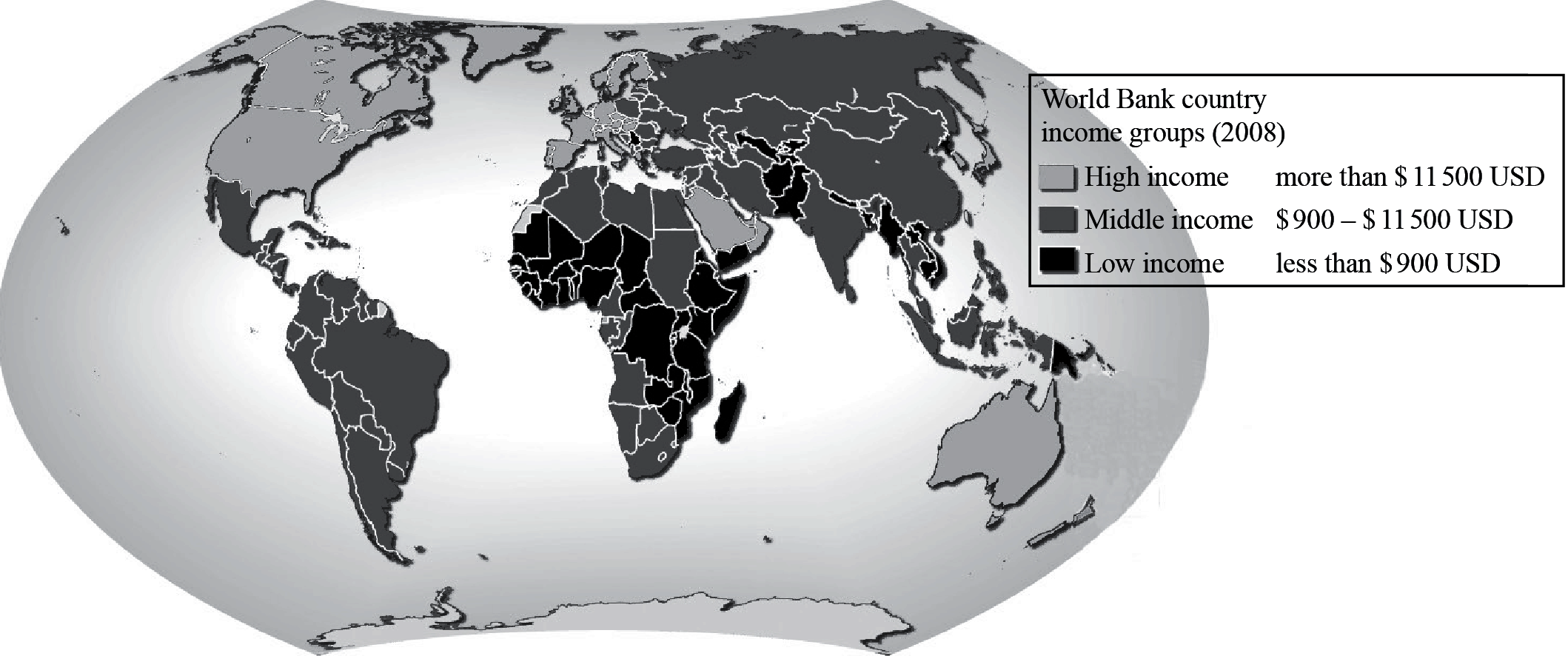| Date | May 2011 | Marks available | 5 | Reference code | 11M.1.bp.2 |
| Level | SL and HL | Paper | 1 | Time zone | |
| Command term | Explain | Question number | 2 | Adapted from | N/A |
Question
The map shows the Gross National Income (GNI) per person for different countries in 2008.

[Source: http://maps.grida.no/go/graphic/world-bank-country-income-groups]
Describe the global pattern of GNI per person shown on the map.
Suggest two reasons why GNI per person is not a reliable way of measuring global disparities.
Explain how debt relief may help to reduce global disparities.
Markscheme
The map shows that most low income countries are in Africa and Central and South Asia [1 mark]; high income countries are in North America, Western Europe, and Australia [1 mark]. The rest of the world is classified as middle income [1 mark]. For full marks some quantification should be included or anomalies identified.
Two reasons should be identified and explained for 2+2 marks.
These could be: GNI is not a composite indicator such as HDI, which allows more (non-economic) variables to be measured; it does not indicate spatial or demographic disparities within countries; it does not give any indication of human rights, health, gender equality; it does not take into account purchasing power parity; the informal economy is excluded, or any other explained valid reason.
Answers should explain/imply that they know what debt relief is [1 mark]. The rest of the response should look at how regions or nations would benefit or have benefited from having their external debt reduced or cancelled. Award 1 mark for each basic explanation, with additional marks for extension and exemplification. Possible 4×1 marks or 2×2 marks.
Possible explanations would be: as the percentage of state revenue going towards debt is reduced, the state can channel funds into development projects; no debt means nations can be autonomous from organizations such as the WB or IMF in terms of pathways to economic development; no debt means no need for more loans to pay off interest.
It is possible for candidates to argue that debt relief does not reduce global disparities.
Examiners report
Good responses although some lacked quantification or the identification of an anomaly. Unfortunately there was still the odd response that referred to Africa as an LEDC.
This was well answered with candidates providing detailed criticism of this indicator. Reasons varied: it is not a composite indicator; is only an average; is only economic; ignores PPP etc.
It was obvious from some responses that the candidate did not know what debt relief is. A largish minority actually left this question blank. Those who did answer it struggled to explain what debt relief is and could not go further with the question.
Those who did have some understanding were able to explain what debt relief was and how it might help nation states reduce disparities, but very few were able to provide detail such as examples or indicate some understanding of the WB and IMF's HIPC initiative. There were a small number of superb responses, one actually arguing that debt relief does the opposite and is not helping reduce disparities due to the conditions attached to the HIPC programme. Haiti was a commonly used example in the stronger responses.

